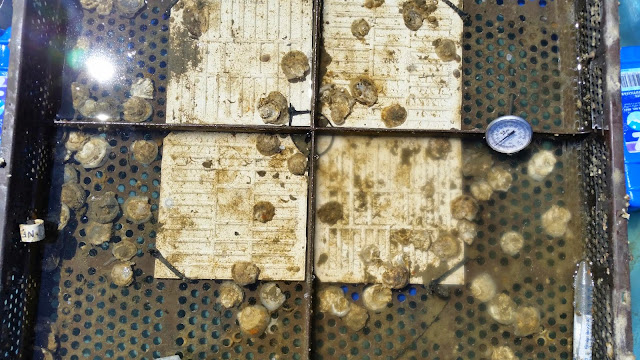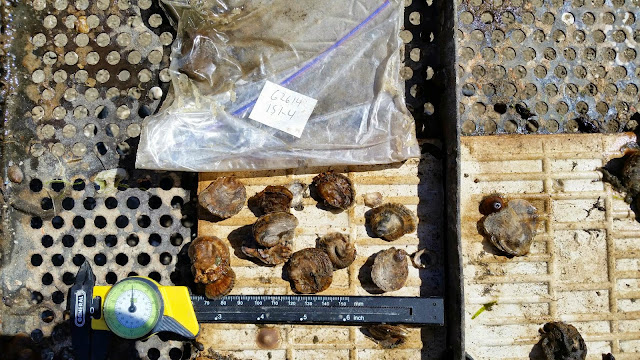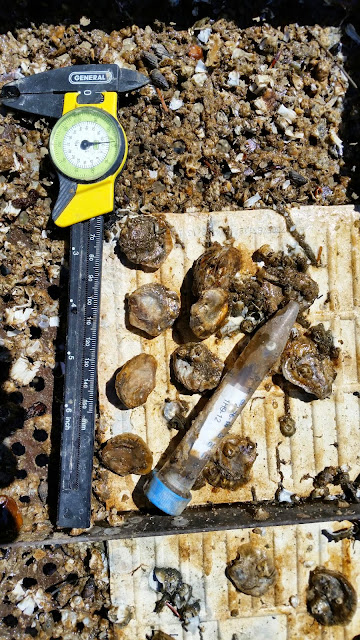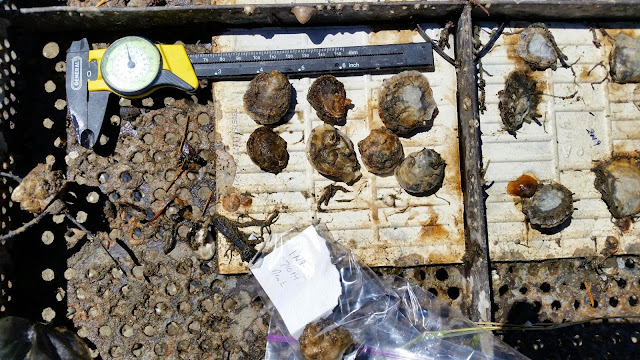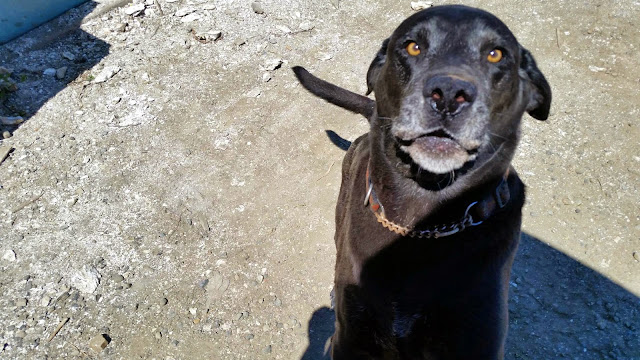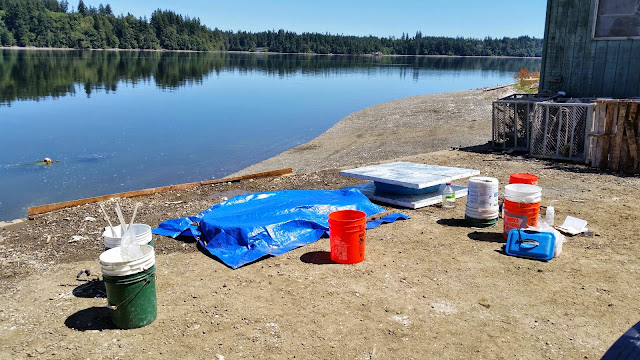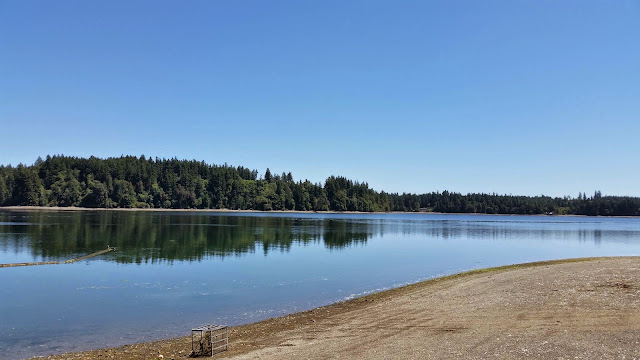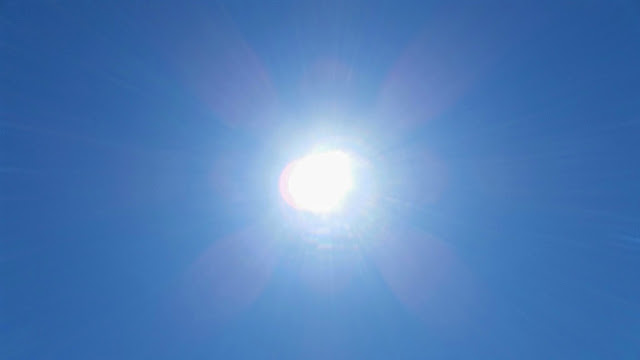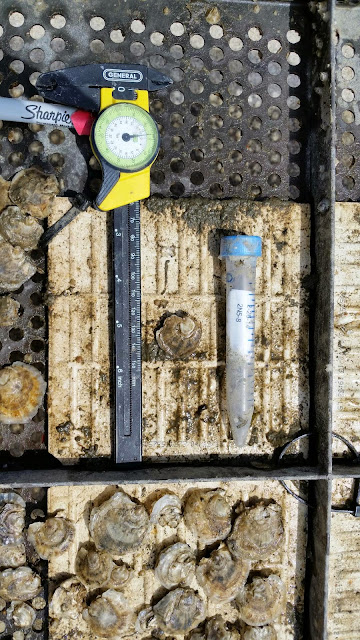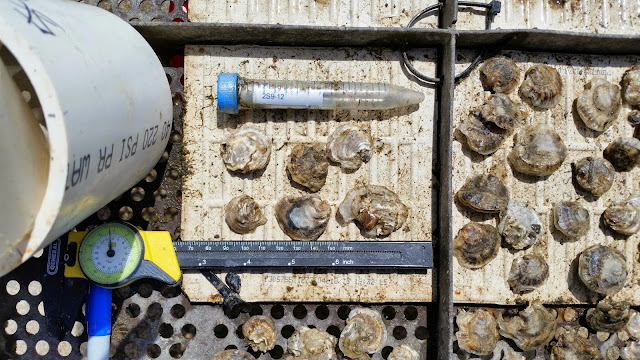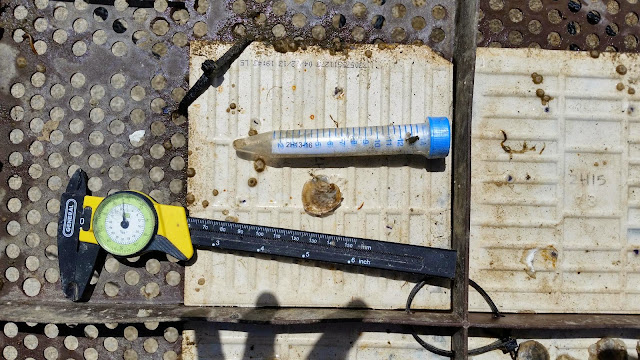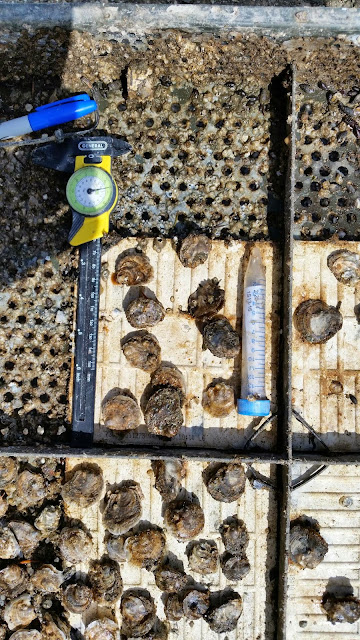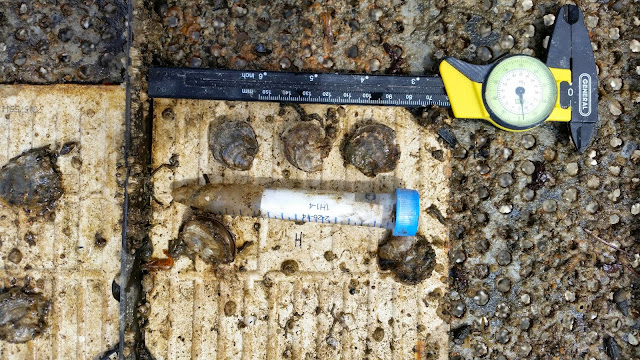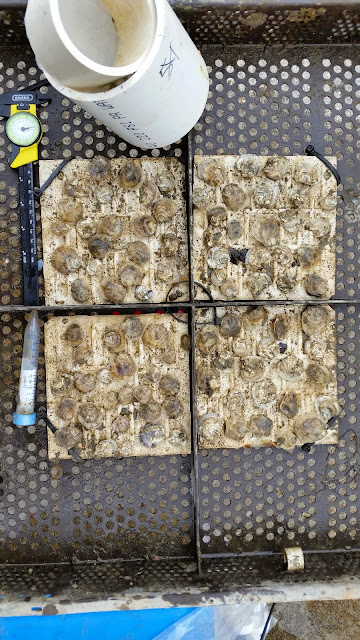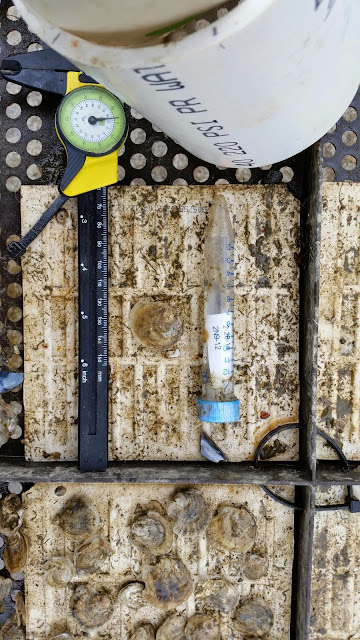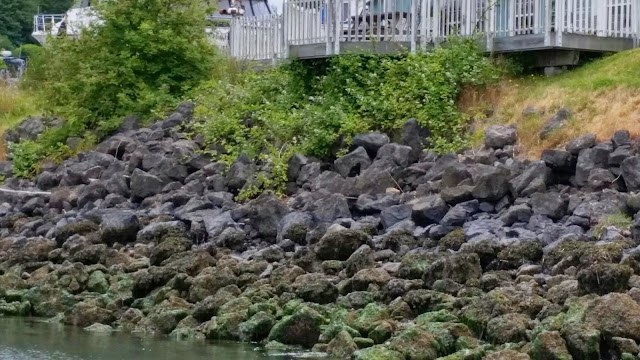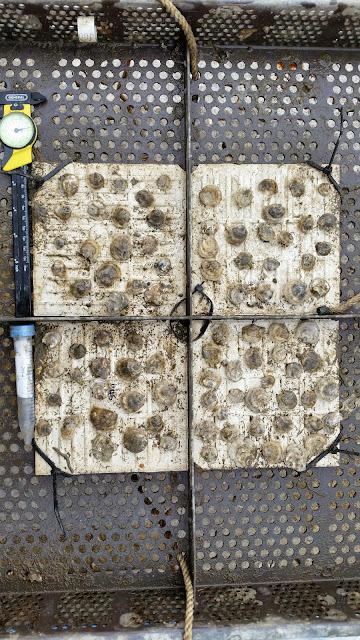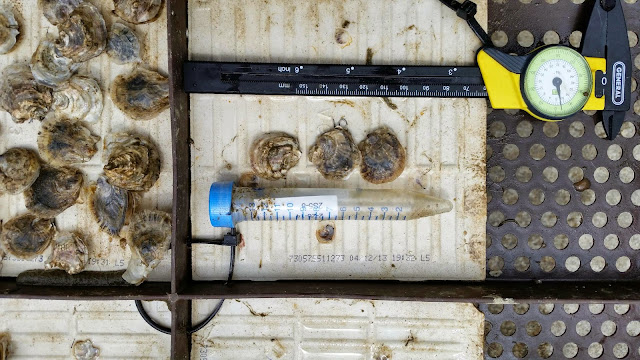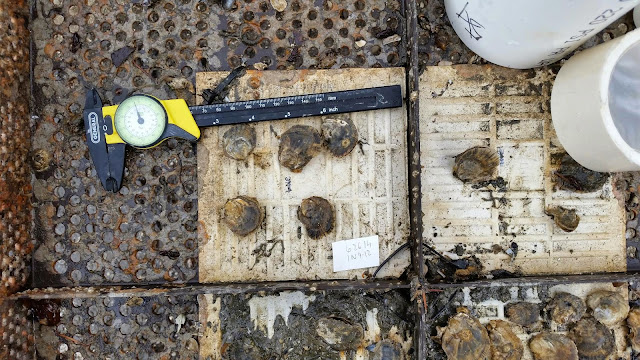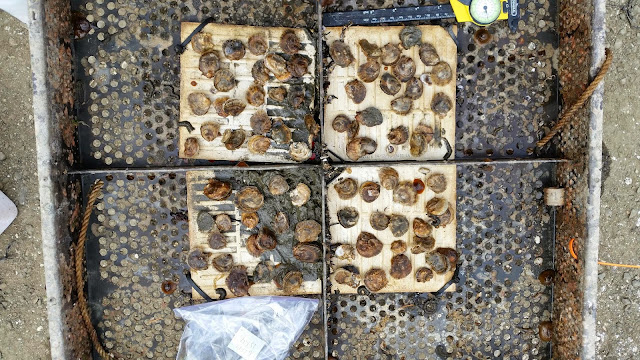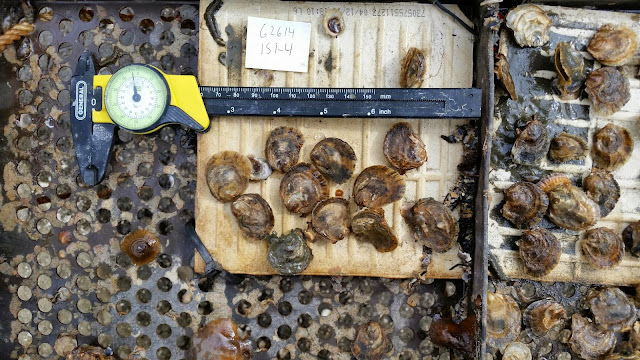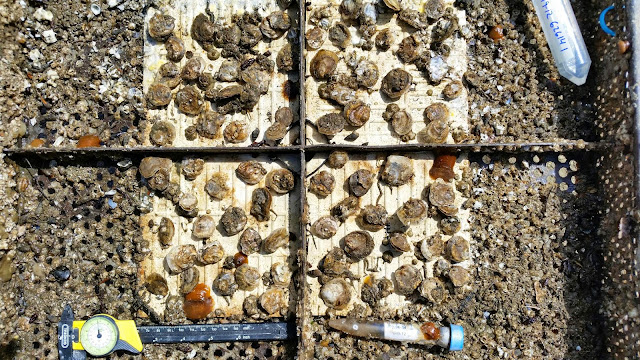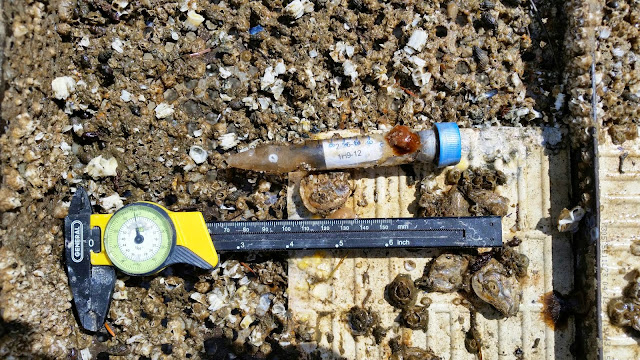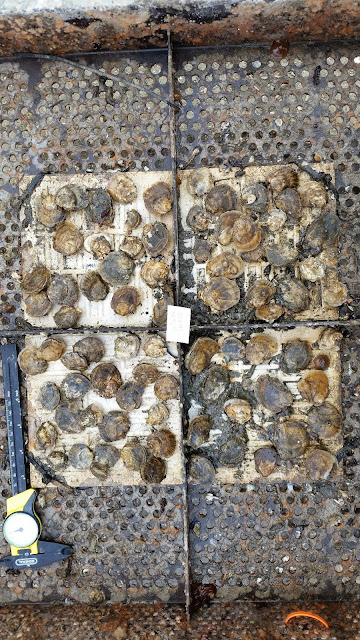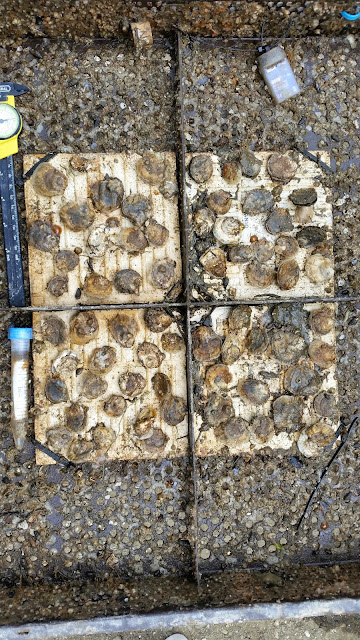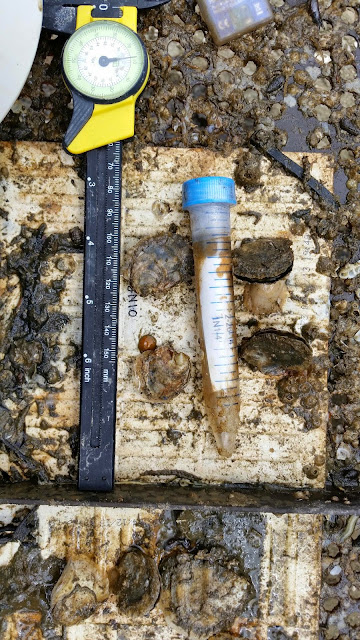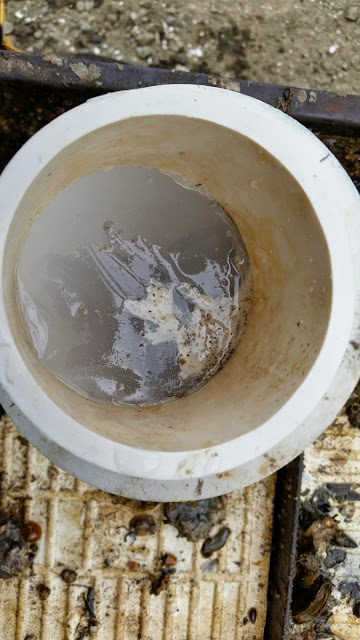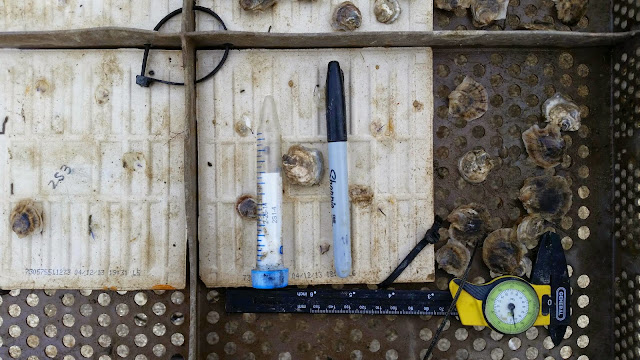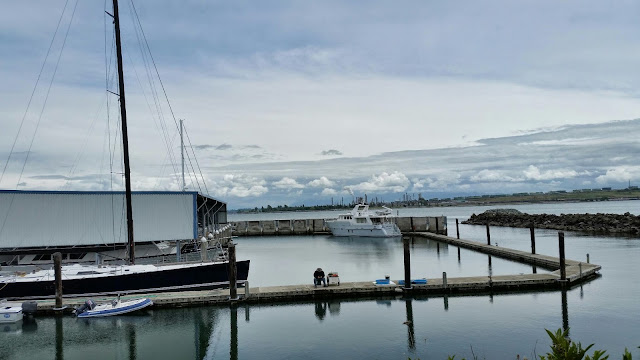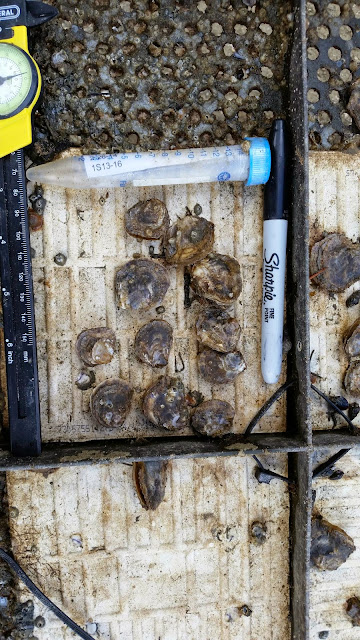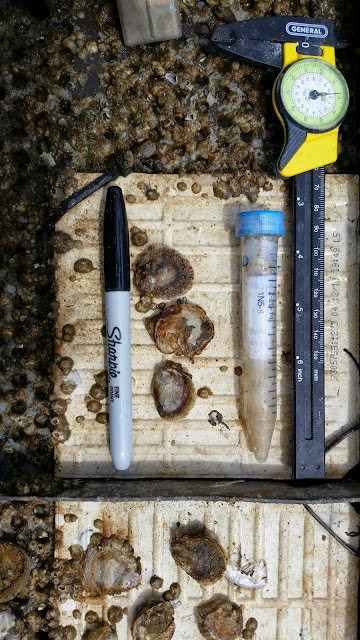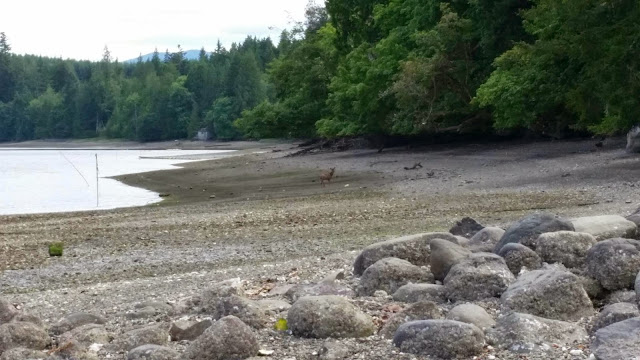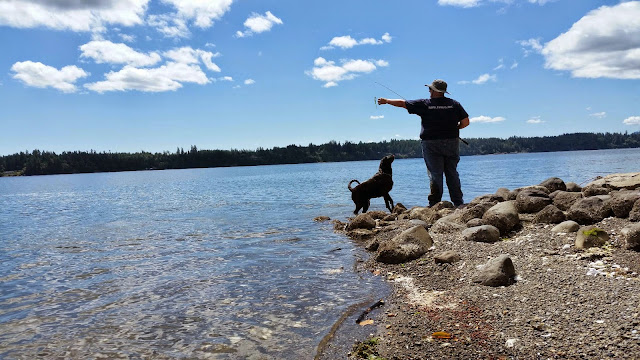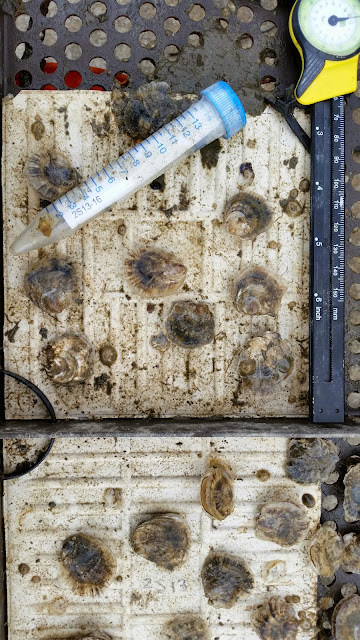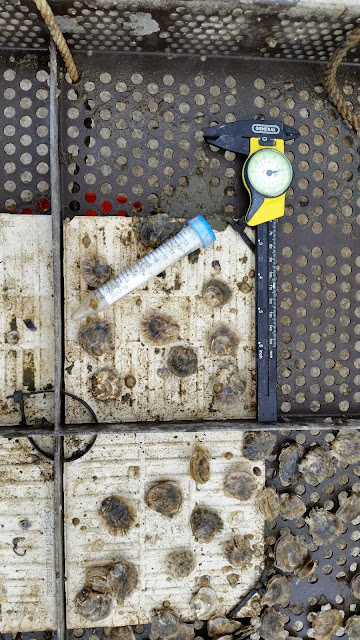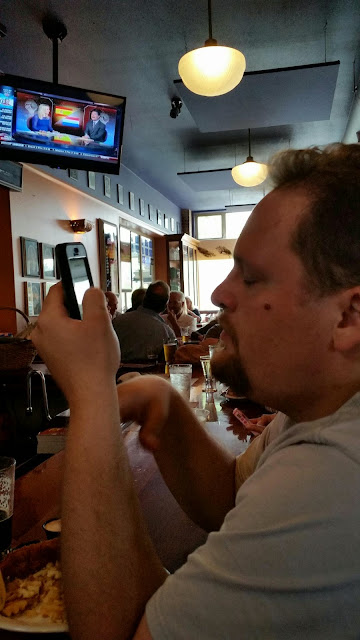Anacortes, wa
Low 70s to mid 80s
Performed the anesthesia sop with insulation and ice blocks on treatment and tarp cover on Pretreatment and recovery. Found lots of brooders in southern pop and none in the other two pops. South sound oysters seem to be very attune to tidal changes. Also temps remained within range using the tarp cover. I think I should add a board or stand to keep the tarp higher over the tubs to keep it out of the water and allow for air flow to keep air temps lower. Also note to self, next week I absolutely have to refill my EtOH, 50 ml falcon tubes, and zipties. Also need a new water proof write in the rain pen as I have lost my only good one.
Numbers as follow :
Temps in c
Pretreatment
Initial. 16
45. 16
1.5. 17
Treatment
Initial. 14
45. 15
1.5. 14
2.25. 14
Recovery
Initial. 16
45. 16
1.5. 17
Salinity
Pretreatment. 20
Treatment. 68
Recovery. 23
Brood collection
2H5-8
Brood. 0
Gaping. 70
Dead. 0
Closed. 28
2S13-16
Brood. 11
Gaping. 81
Dead. 0
Closed. 11
Brooders
# size. Sick
1. 27. W
2. 25. W
3. 26. W
4. 30. W
5. 28. W
6. 30. W
7. 27. W
8. 31. W
9. 25. W
10. 32. W
11. 31. W
2N1-4
Brood. 0
Gaping. 78
Dead. 0
Closed. 17

